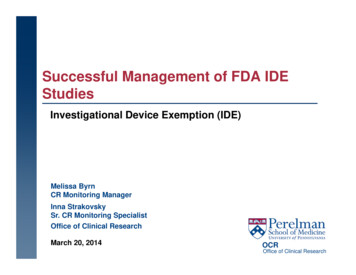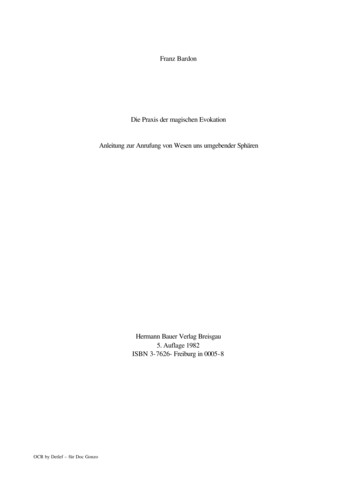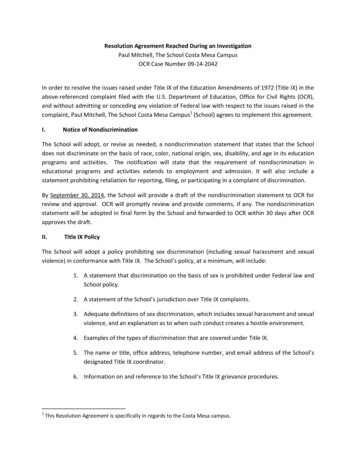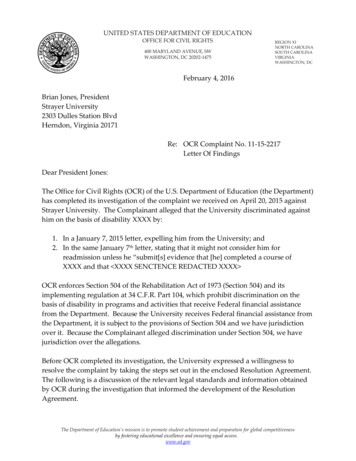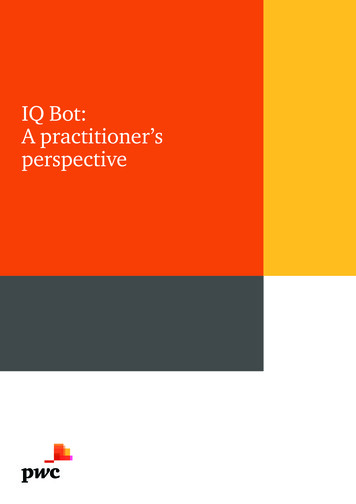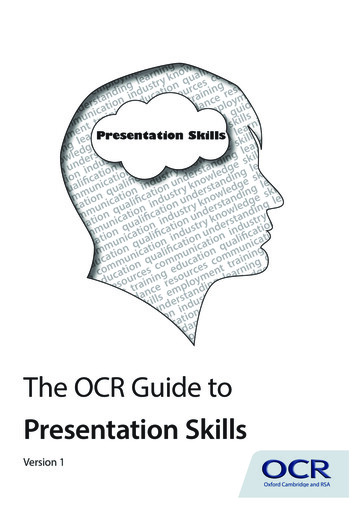
Transcription
gdine nnactersuidan icatiodnu g g mun kills tion ng ustry tionisnrni om e uca rn ind ucalearces cwledgg ed g leation g ed nceu kno inin ndin nica ainin uida ge n cationosre stry t tra rsta mu t tr g g led catio uni ionm atu en de om en in ow ifigindloym n un ces c loym learnry kn quals comeducrces aininort nep gu trpiemlificat resouls em ndin induscatio sourcaining reso ent e mentealcreu em c yquaance e ski derstationg ednce r ent tidanc ployuidanmplouidan ntdcngeguiwled ion u munitraininguidaploymg guills emg gkills eing gloymancenintoinkkn lificas com ent ning ls emlearn ge s lear dge s learn emp guidmentcele ing skills ning ploy idan ntkil ing wled ding oSkillsearePresentationquaource ploymslwr m ugednndreslls emandin ledgrstanry knoersta try knersta ledge g leaills eing g loym ancetnwsdtiksk derst kno unde dus n undindu n undknow andi ge s learn emp gui ymenun ustryation ion incatio tion catio stry derstwledding skillsrningmploindalific nicat ualifiunicaualifi induon uny knorstan dge g leaills eing skillsqummu on q mm on q ationficati ustr nde owlendin e sk earn dge dingco ucati es coucati unic uali n indtion utry knersta ledging l owlerstanedsourcg ed ommion qcatiolifica ndus und knowtand ry knundeustryre inin ces c ucat uni qua on i ation stry ders dust tion ind n urcetrasour g edcommtion icati alific indu n un n inlifica tion catio reso menre ainin ces duca mun qu tion catioicatio qua unica edu nce ploytr sour g e com ation nica alifi un tion mm ing uidas em ingre aininrces duc mu n qu ommuca s co trainng g skill and ontr sou ng e com atio es c g ed urce ent arni ge erst icatire aini rces educ ourc inin eso oym g le wled und un nttr sou ng res tra ce r mpl din kno tion omm mere aini nce ent idan ls e rstan try ifica es c ploytr uida oym gu skil de dus ual urc em tion anceg mpl ing ge n un n in n q reso kills ifica uide arn led atio atio atio ce e s ual g g onle now lific nic duc dan edg n q rnin atik ua mu g e gui wl tio lea nic geq om nin g kno uca g mu ledc rai rnin try ed din om owt lea us ing tan s c knindtrain ndersourceustryskillsu res indSkills GuideThe OCR Guide toPresentation SkillsVersion 1
n t tr on i gui uali ski mm g le cati owl nce ificat ills sn cati ing n q dge co din edu kn ida ual sk urceem ni arn atio wle ces stan g stry guq dge eso ionunnrem ng l duc kno sou nder raini indu ning atio wle ce r ficat lls sdi ing eustry ce reon u nt t ion lear educy kno idan uali e ski ourceainn ind idanificatioyme nicatding ning dustr g gution qledge res cationlsio g guqual empl mmurstan trai n in arnin uca knowdanc alifi skilnintion kills es counde menticationg leng edstry gui on quedgenoliiguiieascyuc dge sour ation plo mun tand train indarnin ucatknowdanc ucat rym om ers nt tion le ed ryditecesreelufiuiw nce ual ills s c nd me ica ing ing ust g g ing inda n q e sk urce on u loy un and rain ind rnin rain on dingi mp mm rst t t on lea t t ati anotogisadta wle e re lific ls e co de en cati ng en nic ersttno danc qua skilurces on un loym uni andi loymmmu und skillsneppeiitmgnonmtosegucnorg cati led res ifica s em com de s em es atio edg rni ploydu knowance qual skillurces on un skill sourcualificnowl g leas em cery guid tion edge reso ficati edgece re n q try k ndin skill idan entngeducanowl nce quali nowl idanucatioindusderstaedge g gu loymg try k guidation stry k g gug ed tion n un nowl arnin empgsud ning duca indu arninaininunica catiostry k ng le skills arninedgee t tr m alifi du ndi gele onerllawge in ati ing en om qu in sta led ing kno ionain unic tandloym ces ction tion der now tand stry ificats p ur ca ica un y k ers du ual esrmem nd em eso du un tion str nd in q urc lsn uskillsnce r ing e ommlifica indu ion uation ation reso skilces communication industry knowledge skills employment training education qualification understanding learning guidance resources communince resources communication industry knowledge skills employment training education qualification understanding learning guidance resourcesng guidance resources communication industry knowledge skills employment training education qualification understanding learning guidance rstanding learning guidance resources communication industry knowledge skills employment training education qualification understanding learncation understanding learning guidance resources communication industry knowledge skills employment training education qualification understion qualification understanding learning guidance resources communication industry knowledge skills employment training education qualificatg education qualification understanding learning guidance resources communication industry knowledge skills employment training educationyment training education qualification understanding learning guidance resources communication industry knowledge skills employment traininedge skills employment training education qualification understanding learning guidance resources communication industry knowledge skills emry knowledge skills employment training education qualification understanding learning guidance resources communication industry knowledgeThisguide on presentationhas beenproducedby OCR to indunication industry knowledge skills employment training education qualificationunderstandinglearning skillsguidanceresourcescommunicationhelp you understandthe skillslearningand techniqueswill needcommunices communication industry knowledge skills employment training education qualificationunderstandingguidanceyouresourcesnce resources communication industry knowledge skills employment training eresourcesto develop, practise and use in a number of situations – publicng guidance resources communication industry knowledge skills employment training education qualification understanding learning guidance rself-development,business,sales, trainingetc.standing learning guidance resources communication industry knowledge skillsspeaking,employmenttraining educationqualificationunderstandinglearncation understanding learning guidance resources communication industry knowledge skills employment training education qualification understion qualification understanding learning guidance resources communication industry knowledge skills employment training education qualificatThis guidehas notbeen writtento employmentaccompany a trainingspecific educationg education qualification understanding learning guidance resources ut focuseson presentationrelate to traininyment training education qualification understanding learning guidance sthatemploymentedge skills employment training education qualification understanding knowledgeareas of both education and work environments. Otherskills emry knowledge skills employment training education qualification understanding learning guidance resources communication industry knowledgeskillsguides are availableat guidancewww.ocr.org.uk.unication industry knowledge skills employment training education qualificationunderstandinglearningresources communication indces communication industry knowledge skills employment training education qualification understanding learning guidance resources communince resources communication industry knowledge skills employment training education qualification understanding learning guidance resourcesng guidance resources communication industry knowledge skills employment training education qualification understanding learning guidance rstanding learning guidance resources communication industry knowledge skills employment training education qualification understanding learncation understanding learning guidance resources communication industry knowledge skills employment training education qualification understion qualification understanding learning guidance resources communication industry knowledge skills employment training education qualificatg education qualification understanding learning guidance resources communication industry knowledge skills employment training educationyment training education qualification understanding learning guidance resources communication industry knowledge skills employment traininedge skills employment training education qualification understanding learning guidance resources communication industry knowledge skills emry knowledge skills employment training education qualification understanding learning guidance resources communication industry knowledgeunication industry knowledge skills employment training education qualification understanding learning guidance resources communication indces communication industry knowledge skills employment training education qualification understanding learning guidance resources communince resources communication industry knowledge skills employment training education qualification understanding learning guidance resourcesstanding learning guidance resources communication industry knowledge skills employment training education qualification understanding learncation understanding learning guidance resources communication industry knowledge skills employment training education qualification undersg education qualification understanding learning guidance resources communication industry knowledge skills employment training educationemployment training education qualification understanding learning guidance resources communication industry knowledge skills employment try knowledge skills employment training education qualification understanding learning guidance resources communication industry knowledgeces communication industry knowledge skills employment training education qualification understanding learning guidance resources communing guidance resources communication industry knowledge skills employment training education qualification understanding learning guidance rcation understanding learning guidance resources communication industry knowledge skills employment training education qualification undersg education qualification understanding learning guidance resources communication industry knowledge skills employment training educationedge skills employment training education qualification understanding learning guidance resources communication industry knowledge skills emunication industry knowledge skills employment training education qualification understanding learning guidance resources communication indng guidance resources communication industry knowledge skills employment training education qualification understanding learning guidance rfication understanding learning guidance resources communication industry knowledge skills employment training education qualification undersloyment training education qualification understanding learning guidance resources communication industry knowledge skills employment trainmmunication industry knowledge skills employment training education qualification understanding learning guidance resources communication
4Presentation SkillsPresentation SkillsContentsWhat is a presentation?Page 5Planning your presentationPage 8Structuring the presentationPage 11Preparing to presentPage 14Managing the presentationPage 20Presentation checklistPage 24Useful links and resourcesPage 265What is a presentation?Every time you communicate with another person or group ofpeople, you are presenting yourself; your opinions, thoughts,hopes, likes, dislikes, intentions and a variety of other aspects ofyour personality, to the other person.Sometimes you will find yourself in a situationwhere you must formally present information– a team briefing, meeting or interview forexample. Sometimes you will present in amore informal setting – persuading friendsof the merits of one singer over another forexample.Regardless of the nature of the presentation orthe environment in which it happens, the aimof all presentations is to share information withthe audience with a view to selling a productor idea, persuading them to accept your wayof thinking on a given subject, gaining goodwill, teaching something, spurring people intoaction or, more often than not, a combinationof all of these objectives.This document will print with reduced colours.www.ocr.org.ukwww.ocr.org.uk
6Presentation SkillsPresentation SkillsKey elements of a successfulpresentationEmotionalDifferent types of presentationSuccessful presentations tend to be thoseThere are several different types ofIn order to be successful, your presentationwhich connect with the audience on anpresentation, the most common are:should be understandable, memorable andemotional level. Using statistics and raw dataemotional.may be factually accurate but is unlikely toInformative – sharing information with themove an audience to action or persuade themaudience, for example the results of a researchUnderstandableof the importance of the point you are makingprojectAsk yourself what is the key message thaton a human level. Storytelling is a great way toyou want the audience to take away withhelp audiences feel connected to the pointsDemonstrative – demonstrating howthem from your presentation. Too many ideas,you are making and will increase the chancesto do something, for example a cookerytoo much information and overly technicalof them wanting to play their part in the story.demonstration7language will only serve to hinder theaudience’s understanding. Make sure you usePersuasive – convincing listeners to acceptlanguage that is appropriate for the audienceyour proposal, for example offering theand give information in a clear, concise way.solution to a problem, dispute or controversyMemorableDecision making – motivating audienceResearch shows that the human brain is onlymembers to follow your suggested course ofcapable of holding onto between three andaction, for example buying your product orseven facts in its short term memory, but threedonating money to a good cause.seems to be the ‘magic number’. Successfulpresentations often use this fact to makethem more memorable. You could think aboutsplitting your presentation into three parts,The advertising and media industries recognise the importance of slogans andgiving three action points, highlighting threeuse them to capture people’s interest and send out a clear message about thekey facts and so on.product. Some good examples include:Minstrels – melt in your mouth, not in your handApple iPhone – the internet in your pocketAsda – saving you money everydayCan you think of any other advertising slogans that sum up the unique sellingpoint of a product in such a clear concise way?www.ocr.org.ukwww.ocr.org.uk
Presentation Skills8Presentation SkillsPlanning your presentationDeciding on the type of presentationPersuasive – gain the audience’s attentionWe have already seen that there are differentstraight away, explain the problem, describetypes of presentation. Each of these differenthow and why your proposal will offer thetypes of presentation is best delivered in asolution and end the presentation with a callWhat you say and how you say it will dependslightly different way. Most presentations willto action.on the makeup of the audience. Presenting tobe a mixture of some or all of the types listed,Considering the audiencea group of primary school children will requirea different approach from presenting to agroup of local business people.All presenters, regardless of who is in theQuestions to ask about theaudienceWho are they (ages/gender etc.)?How many will there be?audience, should:What is their background/whereare they from? Introduce themselves Explain why they are thereWhat relevant knowledge/experience do they already have? Share the aims of the presentation Manage the audiences expectations ofthe presentationHow have they been selected(have they chosen to attend)?but the information below should help you atDecision making – use storytelling to gain anthe start of the planning process.emotional connection, explain the problem,9compare and contrast two worlds (oneInformative – keep it brief and to the point,without taking action and one where actionstick to the facts and avoid overly complicatedhas been taken), call the audience to actioninformation.and explain how they can be part of thesolution.Demonstrative – explain why the skill isvaluable to the audience, demonstrate andexplain the process and then allow theaudience to make/practice/ have a go forthemselves.The following questions will help you decide on the type of presentation that willbest suit your needs. You may find that differing approaches are needed at differentpoints in your presentation.What is the main aim of your presentation?What do you expect from your audience during the presentation?What do you want the audience to learn/remember from your presentation?What do you hope the audience will do at the end of/after your presentation as aresult of listening to you?www.ocr.org.ukwww.ocr.org.uk
10Presentation SkillsWorking within given parametersThe key to successful presenting is findingThere will be many aspects of yourout what these parameters are and planningpresentation that you are in control of andyour presentation within them. In this wayhave choice over. There will, however, be otheryou will not get a nasty shock when you arrivefactors in which you may have little or noPresentation SkillsStructuring the presentation at the venue with your beautifully preparedOrganising and gatheringpresentation materialssay. Things such as the venue, presentationPowerPoint presentation to find no computerThe purpose of your presentation needs to Key agendas/targetsspace, room set up, available equipment,or projector, or you will not plan a practicalbe clear. A key skill in preparing an effective Work that is already happening in thepresentation time and so on may all beactivity, only to find on the day that you arepresentation is in knowing what to includedictated to you, and you will have to plan andpresenting in a lecture theatre with fixedand what to leave out. deliver your presentation within these giventiered seating.Try this method to fine tune your ideas: parameters.Questions to ask before you start planningWhere are you presenting?What space do you have?How is the room set up and can this be altered?What AV (audio/visual) equipment will be available/what do you need to take with you?Who is your point of contact before/on the day?Dates of important events ordevelopmentsspecific fieldFinancial information (budgets, forecastsetc)Stories to tellWrite the purpose on a sheet of paperand then use post-it notes to write downThere are many places that this informationeverything that you could tell the audience oncan be found. It may be that you havethis subject. Use one note per idea. When youpersonal experience of the topic you arehave exhausted your ideas, sort the notes intopresenting; for example you might havethree categories:conducted a survey, carried out experiments, What must I tell the audience?invented a product or been part of a What should I tell them?research project. In this situation you have What could I tell them?an advantage in that you can speak fromexperience; telling real stories and sharingWhat time limits are there?What set up time will you get?11Once you have established the purposeyour knowledge and enthusiasm with yourand main topic of your presentation, andaudience.considered the audience, setting and situation,your next step is to gather informationIf you are presenting a topic about which youand organise it so that it is interesting anddon’t have first-hand experience then youappropriate for your listeners.will have to find the information you needfrom alternative sources. These might includewww.ocr.org.ukWhat information you need will depend onthe internet, library, contacting relevantthe type of presentation you are doing. Youpeople, reading newspapers and journals ormay need to find:conducting interviews. Facts and figures relevant to your topic Results and/or analysis of research Expert opinionswww.ocr.org.uk
12Presentation SkillsWriting your presentation Consider carefully the structure of yourpresentation. It needs an introduction that clearly puts For each point on your list, ask yourself An invitation for listeners to ask questionspresentation that has a logical order and“what do I want the audience to learn Thanking the audience for their time andflows well.from this point” and/or “what is theA strong end to the presentation is asimportant message I want to get across”important as an attention grabbing start.the audience in the picture. As withthe story line of a good film or book, aThere needs to be a main body to thePresentation Skills attention Arrange the key points in a logical orderTransitions Embellish each of these key points withAlthough not a specific section in their owngood beginning will connect with theIntroductionsupporting information; this may includeright, transitions have an important role toaudience appropriately and grab theirIn this section you should explain the contentevidence, facts and figures, diagrams, filmplay in helping the audience navigate theirattention.and purpose of your presentation. It isclips etc.way through a presentation. Transitions helpyour chance to capture the interest of the13to divide the presentation into manageableaudience, so it’s vital that your introduction isThe number of key points you make willchunks. They link different aspects of your talkupbeat and engaging.depend on the length of time you have toand help maintain the pace and flow of thepresent. As a rough guide, you should aimpresentation.Elements you might want to use in yourfor three key points in a 10 – 15 minutesintroduction include:presentation, six for a 30 minute presentationExamples include: Who you are and where you are fromand eight in a 45 minute presentation. “I would like to start by discussing ” What you plan to discuss/share/ “I will now move on to ” “Having explored we can now seedemonstrate during your presentationConclusion How you intend to explore the topicThe conclusion should summarise the What you hope the outcome will bemain points and reflect back on the aim “Moving on to look at ” What you want the audience to dothat was stated in the introduction. This is “We can now shift the focus from to ”that ”your opportunity to make a positive lastingMain contentimpression so make sure your conclusion isThis is the most important part of yourdelivered confidently.presentation; the section where you will makethe pertinent points and during which youImportant elements of a conclusion mayhope to show/teach/persuade/inform theinclude:audience to the best of your ability. When writing the main section you might find A summing up of the main pointsit helpful to: A review of the main findings/Reviewing the purpose and topic of thepresentation Produce a list or summary of the keypoints you want to communicateconclusions A suggestion for what the next stage(s)might bewww.ocr.org.ukwww.ocr.org.uk
14Presentation SkillsPreparing to presentOnce you have written your presentation, there are still lots ofthings to think about, organise and prepare in order to maximiseyour chances of success.VenuePresentation SkillsUse of visual aids If you are concerned about your spelling/Visual aids include things such as:neatness of writing you could ask Flip chartssomeone else to scribe for you or try to White boards and interactive whitemake light of it (“I should have been aboardsdoctor with my handwriting” or “if you Computer presentation programmescould answer in words of one syllable I Handouts Videostand more chance of spelling them”) Try to position the flip chart so that youdon’t turn your back on your audienceIdeally, the type of presentation you want toThe key to presenting successfully in anydo will dictate what type of venue you use,type of venue is to find all of the informationVisual aids can be of great benefit and, whenbut you may find that in reality the venueyou need before you get too far through theused effectively, can help to maintain anis predetermined and it is this that ends upplanning process (see questions in ‘workingaudience’s interest and to communicatelimiting the sort of presentation you can do.within given parameters’ on page 10) andpertinent points. Be aware, however, thatyour presentation, so you can just flipto really explore how you can deliver anpoorly managed visual aids can ruin aover to them at the relevant timeIf you do have a variety of different types ofengaging and interactive presentation withinpresentation; to use no visual aids is bettervenue to choose from, then your presentationthe limitations of the environment.than using poor visual aids or using visual aidsto refer back to later in the presentation,poorly!and stick them to the wallcan make full use of this to be as exciting,15when you’re writing on it (or again, havea scribe) Pre-prepare any necessary pages beforeRip off any pages you think you will needinteractive and practical as possible. If youare more limited in terms of space and roomFlip chartsset up, but still want to use fun, interactiveAlthough ‘low tech’ the flipchart can still beactivities to help get your point across, thena very useful delivery aid. It is particularlyit’s still possible; you may just need to be aconvenient when you wish to record thebit more imaginative about how youaudience’s thoughts or opinions and isdo it.invaluable if you want the audience tocomplete some small group work of their ownduring your presentation.Imagine you are delivering a presentation that is aiming to gain support for a newformat of sports tournament. How might you get the audience to understandthe new format you are pitching if you had the use of a sports hall, a classroom, aTips for using a flip chart coloured flip chart pens and that they alllecture theatre, a conference room or a coffee shop? Can you think of a way that theaudience could get a real feel for your new style of sports tournament for themselvesin these different environments?Make sure you have a few differentwork! If you know you will struggle to write ina straight line then draw faint pencil lineson the paper prior to your presentationwww.ocr.org.ukwww.ocr.org.uk
16Presentation SkillsWhiteboards and interactive whiteboardsWhiteboards are useful for recording feedback from the audience and for expanding simplePresentation Skillswipe pens and that they workTips for using computer presentationTips for using handoutsYou will (more than likely) have to turnprogrammes your back to the audience to write on it In the same way that you would notDon’t write everything you want tosimply read to the audience from a slide,The white background can cause somesay onto a slide – the slide is there as ado not read to them from the handout.plan to use an interactive whiteboard thenproblems for people with a visualprompt for you and to give the ‘headlines’make sure you are confident about how toimpairmentto the audiencewill affect the format of handout thatideas and diagrams. If you have access to and use it and that you have sufficient time to set The audience and type of presentationDon’t read out the slide – if you write inyour opt for. Think about what you wantit up before your presentation. It may alsoComputer presentation programmesfull sentences you will find yourself simplythe audience to take away with them,be helpful to have a technically competentThere are several different computerreading to an audience who are perfectlywhen they will get a chance to writeperson (if that’s not you!) on hand at the startpresentation programmes available such ascapable of reading for themselves!notes and how you will present the keyof your presentation to help with any technicalMicrosoft PowerPoint, Apple Keynote, Prezi‘Whizzy’ effects are fine, but not if theypoints.glitches that may occur.and CustomShow. All of these programmesstart to detract from the messages you allow users to create and display informationare trying to give or if it just becomes aVideoTips for using a whiteboardas a ‘slideshow’.way to show off your technological skillsThere is now more opportunity than ever Bear in mind that whatever you writeAs with all visual aids, done well theseon the whiteboard will be there onlyprogrammes can be a hugely effective wayHandoutsWebsites such as YouTube have such a vasttemporarily (although you can alwaysto communicate ideas. Done badly, they canA handout is a way for the audience to takerange of footage that you may well find aphotograph the whiteboard if you dosend an audience to sleep.away the salient points from your presentation,clip that backs up the points you are making.plan to use the information at a laterto jog their memories and/or share with othersIncluding video can make your presentationdate)at a later date.more interesting and help to reinforce the 17to include video clips in your presentation.Make sure you use only whiteboard/drymessages you are giving.Handouts come in many shapes and sizes. Youmay decide to type up and print out everyTips for using videoword you plan to say or you might print out Keep video clips short and to the pointthe slides from your presentation programme. Ensure that any clips you show are notYou could give facts and figures in the form ofcharts or graphs or you may give listeners the‘headlines’ and encourage them to make theirsubject to copyright restrictions Use clips that are appropriate for the typeof audience you haveown notes.Handouts are also a useful ‘back up’ – at least ifyou have your presentation on a handout youand the audience still have something to workfrom if the computer won’t turn on!www.ocr.org.ukwww.ocr.org.uk
Presentation Skills18Presentation SkillsUsing notesDifferent learning stylesDifferent audience members will learn in different ways; some people will learn best bylistening to what you say, some will prefer to see what you are tellin
Presentation Skills The OCR Guide to Presentation Skills Version 1. understanding learning guidance resources communication industry knowledge skills employment training education qualification understanding learning guidance resources communication industry knowledge skills employment tr


